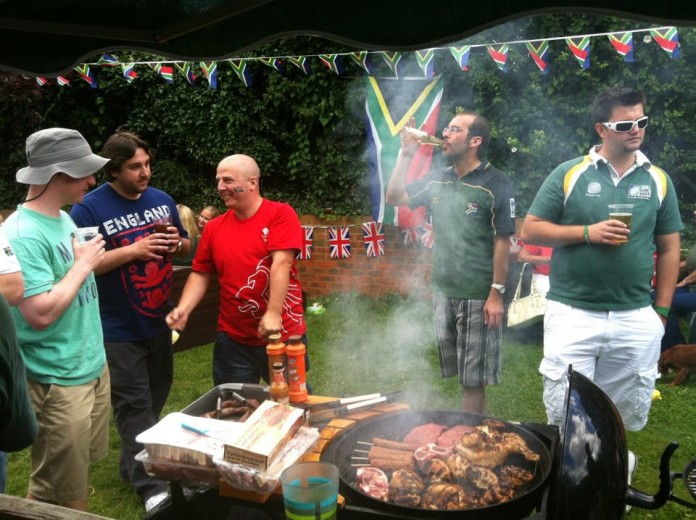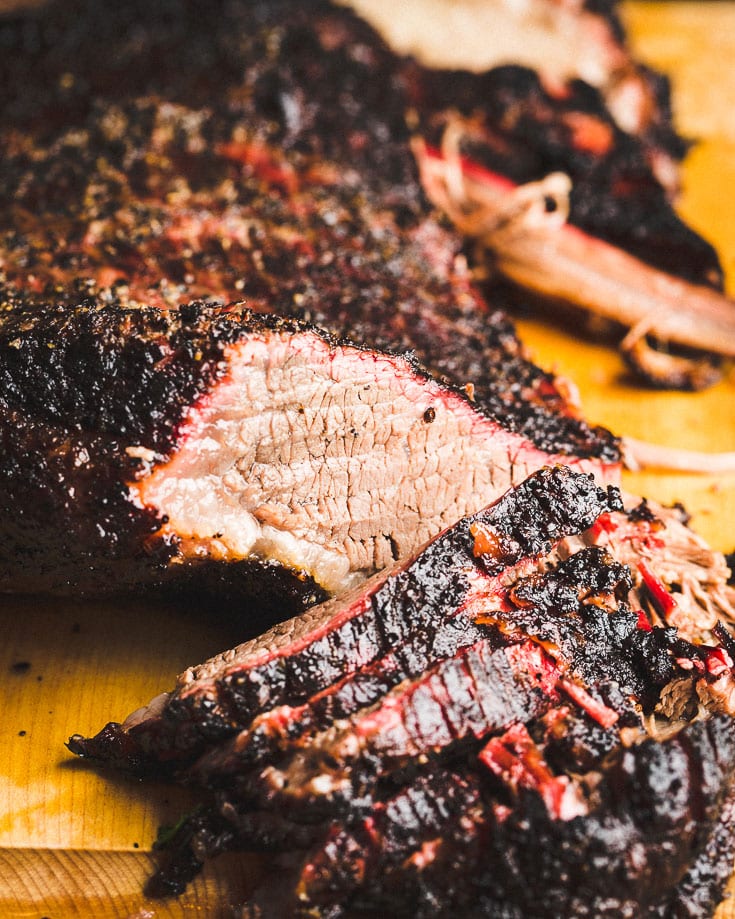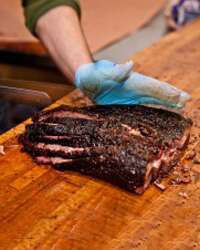
Cook food directly on the coals to achieve maximum heat. The heat produced by a charcoal grill with large open vents will be higher. If your flames are high, you have enough oxygen flowing through. If your flames get too low, there's not enough oxygen. Close the vents if your food is cooking too quickly. The higher the flames, the higher the heat. Low flames indicate that you are not using enough charcoal.
Ventilation
An intake vent is an accessory that can be used to cook with charcoal grills. This device is used to provide oxygen to the combustibles. This is where the grill gets its "fuel". The more open the vent is, the more oxygen can enter the grill and therefore raise the temperature. Controlling the oxygen rate is an important part of controlling the temperature of your grill.
Using the charcoal grill's intake vent is the main means of manipulating the temperature. Near the vent, look for two arrows. If the arrows point at half-open, then the vent may be open. The top cover contains the oxygen- and exhaust dampers. By opening and closing them, you can control the temperature and intensity of the fire. In other words, the more open the vent, the hotter your fire will be.
Vents on charcoal grills should always be fully open. Leaving the vents open can result in hotter and faster burning charcoal. However, closing the vents will reduce the temperature of the grill and minimize the amount of smoke. The bottom vent should be opened, and the top one should be closed. Open the bottom vent only slightly if you notice too much smoke while cooking. If it doesn’t, you can always close the vent halfway or fully.
Another component to be considered is the outtake vent. The outtake vent, which pulls oxygen from the air, is not like the intake vent. Properly venting charcoal and wood fires will prevent them from smothering the fire. Adjusting the intake vent is a good idea to ensure that the temperature is right before you cook. If you're a beginner, start with the intake vent and work your way up from there.
Exhaust vent
An exhaust vent is located on a charcoal barbecue and controls how much air can enter the cooking area. When the vent is partially or fully open, more oxygen will enter the cooking area, which will result in a hotter fire. But if the vent closes, then less oxygen will reach the cooking areas, which will result in a smaller flame. You must consider many factors when controlling your exhaust vent.
The exhaust vent of a charcoal grill works to balance the oxygen levels in the bottom and top chambers. The key to cooking the perfect hamburger is having control over these two fuels. Charcoal grill exhaust ventilations, also known as dampers, do not let heat out, but are a way to control temperature. The vent's proper use can enhance the flavor of your food, and help to keep it tender and juicy.
The most important part of any charcoal grill is the exhaust vent. You should heat the charcoal directly on the coals to extract the maximum heat. The 2-zone method can be used to regulate the temperature. Two-zone cooking allows you to move the food around and cook in sections. You can open the top vent to control the flame, if you are short on time.
The intake damper is the second component of a charcoal grill exhaust pipe. This vent is located at the bottom of your grill. Wood and charcoal require oxygen to burn. Opening the vent reduces that amount. The intake damper can be found on the bottom or side of the grill. The fire can heat up if the vent is open. This makes the fire more hot and allows you cook more food with less effort.
Take-down damper

Charcoal grills allow air to pass through an intake vent. O2 enters the grill when heat rises. The charcoal grill intake damper is a device that allows air to enter the grill. Open the intake damper to allow more oxygen into your grill. A closed vent will restrict oxygen. Too much air can lead to coals getting too hot, which can result in food being burned. A closed damper, on the other hand, will cause the coals not to heat up and eventually die.
Although they are sometimes called intake or exhaust vents, dampers and vents are actually the same thing. An intake damper is found on the lower section of a charcoal grill, while an exhaust vent is located on top. The exhaust and intake ports on charcoal grills are set up to draw oxygen as fuel. To ensure the proper temperature of your food, keep them open. You will get more smoke from a charcoal grill that is hot.
The temperature can be controlled by adjusting the charcoal grill intake damper. The more open the vent, the more oxygen can enter, and the less air, the cooler the grill will be. There are usually two dampers for charcoal grills. One on the lid and one at the bottom. The damper is important to the overall temperature of the charcoal grill, so keep it open for optimal smoke flavor. Remember that it can take between 10-20 minutes for the charcoal grill intake damper to settle.
The charcoal grill intake damper prevents the fire spreading beyond control. The charcoal will burn to ashes if it is not covered. It is easiest to light a charcoal barbecue by closing the vents. These prevent drafts, keep the fire from burning, and maintain a controlled temperature. This is also known by the "fire triangle", which is a method of controlling the temperature.
Cleaning the grill grates while still warm
It is simpler to clean grates of your grill when they are still warm than to use harmful chemicals or heavy metal tools. You will need to soak your grates in a solution consisting of one cup of vinegar and one-half cup of baking soda. Allow the mixture to rest for at least an hour before cleaning the grates with steel wool, a scouring pad, or a sponge. This method is safer and more effective than many chemical solutions.
Your grill grates should be cleaned after each cooking session. Using a high-quality stainless steel brush, scrape off any food that has browned on the grill grates. To remove any food that has been burned, you can either use a separate scraper OR the built in scraper. Take out any brush bristles that are loose. Once you have scrubbed the grates thoroughly, rinse them and then dry them.
Cast-iron grates must be washed using soap and water. If the grates have a heavy buildup of grease, it could cause them to lose their non-stick properties. If you want them to look new, it is essential to thoroughly clean them. The same is true of porcelain grill grates, which should be cleaned by hand with soap and water. Vegetable oil can be used instead of a chemical cleaning solution to avoid rusting.
You can also use aluminum foil to scrub the grill grates. The aluminum foil can be rolled into a circular shape that you can use with tongs. Use a brush to remove any food stuck to the grates. Let the grill cool completely before wiping it. This will ensure that the grill is clean. A charcoal grill can be left on after cooking for a few seconds.
Checking the vents

The charcoal grill's vents control the oxygen level and the temperature inside. The vents are essential to charcoal grilling. This will help you control the temperature, flavor and aroma of your food. To prevent a flame, close all ventilations. Allow the grill to cool completely before you store it.
When heavy rains have recently fallen, it's not uncommon for the lid of a charcoal grill to rust. This can cause the grill to become closed and restrict oxygen flow. This can result in a semi-cooked meal, or semi-burnt coal. For a charcoal grill to function properly, its vents must be functioning correctly. Make sure to inspect them often so that they don't become clogged and you have a more enjoyable cooking experience.
The vent regulates how much oxygen enters and exits the grill. The bottom vent is important in winter cooking as less oxygen means that food cooks quicker. A vent's purpose is to regulate temperature. If it's not working, you can use an aluminum pan with a similar effect. While it won't affect temperature as much like water, it can help you cook better food.
The top vent is also called the exhaust damper. Charcoal grilling requires that the damper is used correctly. You'll end up with too much smoke and a hot fire. The proper settings are crucial to achieve the desired smoke flavor. The vent damper should be adjusted according to the type of food that you're preparing. You must also consider the charcoal grill you use.
FAQ
What are the qualifications to be a chef?
You must hold a bachelor's in culinary arts to be a chef. You will also need to pass several tests administered by ACF. Once you've completed these requirements, you'll receive a certificate verifying your qualifications.
Where can I get free online cooking lessons
Numerous websites offer free cooking lessons. YouTube is a great place to search for cooking videos. Some websites give you access to thousands of recipes. You will need to pay a monthly subscription, but you can still try the site for free for 30 day.
How much does it cost to study Culinary Arts?
You will find that the price to study culinary arts is variable. A four-year degree usually costs around $40,000. A two-year associate's program may be less expensive at $5,000. The type of program you choose will determine the tuition rates. The tuition rates for private institutions are usually higher than those of public universities.
How can I learn how to cook like a professional chef?
Cooking is one way to be a better cook. You can increase your self-confidence by learning how to cook healthy foods for yourself and others. Learn how to cook healthy food at home. The first step is to find out what kind of recipes you like. Next, you should read books on different cuisines, like Mexican, Chinese, and Italian. Finally, you can practice cooking different dishes until your skills are perfect.
Is there a better way to learn to make delicious meals?
Cooking is something that everyone should be able to do. You will miss out on great meals if you don't learn how to cook. To learn how to cook, you must first find a recipe you like and then follow it carefully. The next step is to practice making small modifications to the recipe until it becomes second nature. Finally, try cooking for others. This will help you improve at cooking and also allow you to test your skills.
Statistics
- In the United States, the category is estimated at $23.2 billion annually and is growing faster than the market. (washingtonpost.com)
- According to the BLS, chefs earn $58,740 a year. (learnhowtobecome.org)
- under 10 Kids have been taught that there is special food just for them, and Fiese says that 10 percent of kids will throw a tantrum if they don't get the food they want. (washingtonpost.com)
External Links
How To
How to cook your steak
The thickness and cooking method of any kind of meat will affect the way it is cooked. Thicker steaks cook best at low heat. Thicker steaks require higher temperatures.
Don't overcook them as they will lose flavor. Remember to take your steak out of the oven when it's done. You won't burn.
Cooking times depend on the size of the steak and the desired degree of doneness. Here are some general guidelines.
Medium Rare: Cook the meat until it reaches medium rare (63°C). This will take between 3 to 5 minutes per side.
Medium: Cook until medium, which means the internal temp reaches 160degF (71degC). This usually takes about 6 minutes per side.
Well Done: Cook until well done, which means the internal temps reach 180degF (82degC). This takes between 8 and 12 minutes per side.